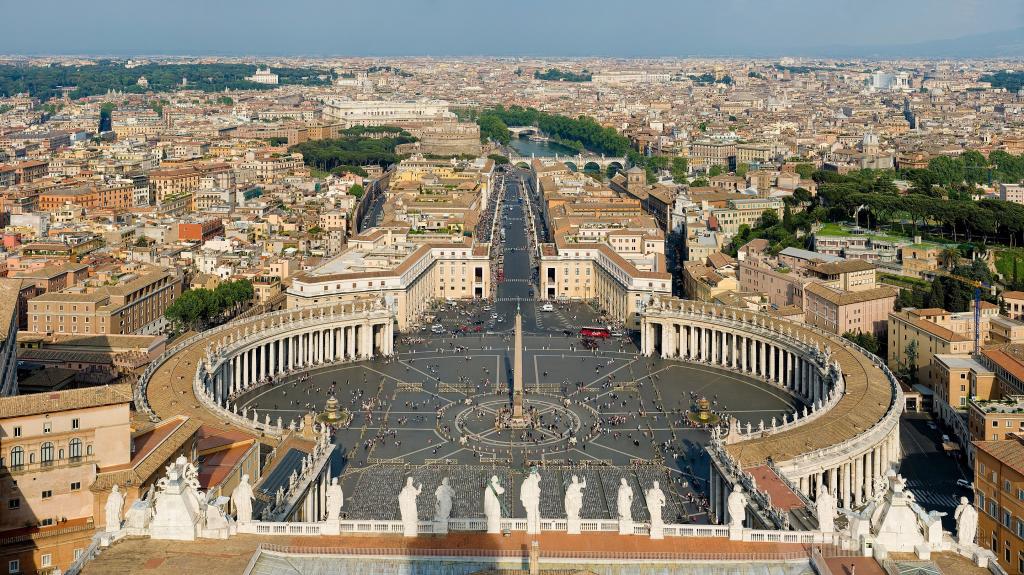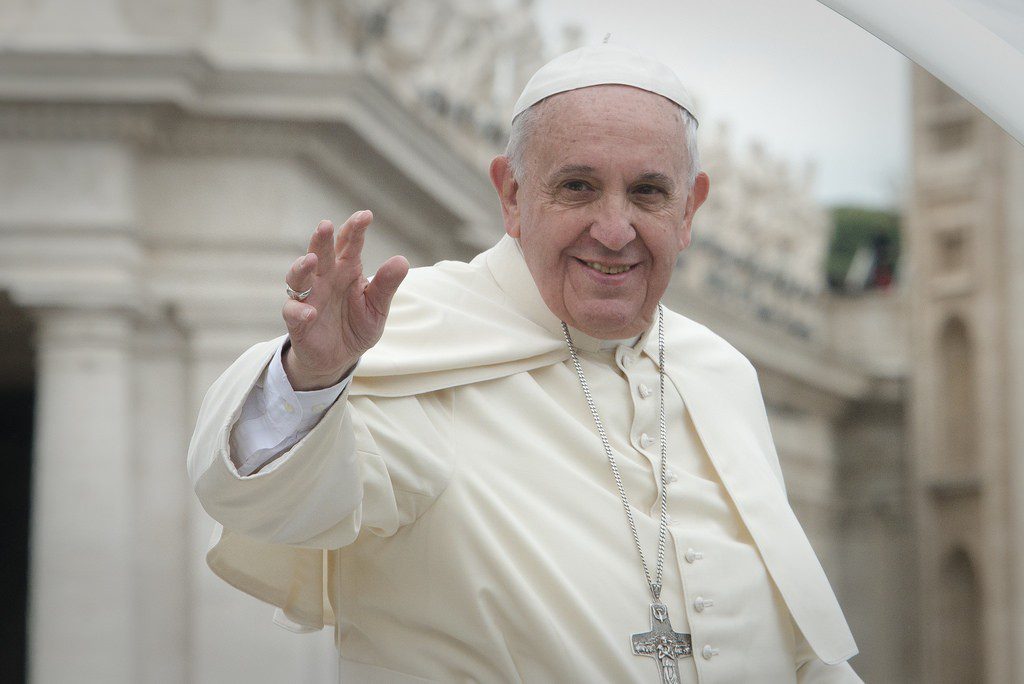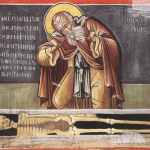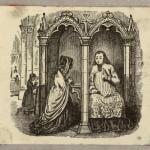
Were Amazon Synod participants venerating a statue meant to represent Mary? Or were at least some of them worshipping a statue of a pregnant woman meant to represent “life” or “Mother Earth”? And were the defenders of this statue doing so under the belief that this was Mary, or that, on the other hand, the statue was not given any particular sort of veneration but merely one among other symbols of life in the Amazon? Or were they perfectly fine with people who claim the name “Catholic” venerating “Mother Earth”?
It’s kind of frustrating that, in the context of a synod with so many Big Items on the agenda — in particular, questions about whether plotters and schemers used the synod as a way to build towards married and female priests and the creation of a new concept of “sins against the environment” — we get sidetracked with this question. But at the same time, the vague paragraphs about a special “rite” for the Amazon make no sense to me and it’s not at all clear if this means a “special canon law structure that permits married priests uniquely (for the time being) there” or if it’s every bit as much about “liturgy and rituals and maybe even doctrine that wouldn’t be recognized as Catholic anywhere else are OK there.”
But here’s a link that has been passed around without (that I can find) an original source or context: a document that purports to be the “program” for the synod, with 27 pages of Italian text on the issues in the Amazon and profiles of missionaries there. And there are prayers: one begins “Signore Dio, Uno e Trino,” that is, Lord God, one and triune” (p. 11). The second so-called “prayer” (p. 27) is really a poem attributed to Gandhi, “A Gift,” which reads in part:
Take a smile,
give it those who have never had one.
Take a sunbeam,
let it fly to where the night reigns. . . .Take goodness,
and gift it to those who don’t know how to give.Discover love,
and transmit it to the world.
As you might guess, this is not my thing. But what’s more, this is not a prayer.
(Incidentally, I don’t read Italian except insofar as there are sufficient numbers of cognates with other Romance languages or English, but – well, the magic of Google Translate does the job.)
And the third prayer? It reads as follows (in Italian first, then Google Translate’s version for English).
Pachamama di questi luoghi,
bevi e mangia a volontà questa offerta,
affinché sia fruttuosa questa terra.
Pachamama, buona madre
Sii propizia! Sii propizia!
Fa’ che i buoi camminino bene,
e che non si stanchino.
Fa’ che la semente spunti bene,
che non le succeda nulla di male,
che il gelo non la distrugga,
che produca buoni alimenti.
A te lo chiediamo:
donaci tutto.
Sii propizia! Sii propozia!
(Preghiera alla Madre Terra dei popoli Inca)
Pachamama of these places,
drink and eat this offering at will,
so that this land may be fruitful.
Pachamama, good mother
Be propitious! Be propitious!
Let the oxen walk well,
and let them not get tired.
Let the seeds come out well,
that nothing bad happens to her,
that the frost does not destroy it,
that produces good food.
We ask you:
give us everything.
Be propitious! Be proud!
(Prayer to the Mother Earth of the Inca peoples)
So what on earth did the authors of this brochure have in mind in including this prayer?
Is this meant merely to share some insight into the cultural heritage of the Amazonians (even though the Incans had nothing to do with the Amazon)? I’ll be honest – the text at the link isn’t copy-able so to see a translation requires manual typing rather than just copy/paste; to the extent that I can derive meaning from cognates and pictures, there is no context that would explain this. The formatting, identical to the “real” prayer and the Gandhi poem, suggest that this is meant as a “real” pray-able text which the reader is meant to find meaningful.
Separately, here’s an exchange on twitter earlier today:
Nobody bowed down to idolatrous statues. They were Amazonian Catholics praying to Mother Earth. The statuettes, the canoe, etc. were there because they are symbols of their culture. Call me a liar again, and you’re blocked.
— Austen Ivereigh (@austeni) October 27, 2019
For context, this individual, whose name was unfamiliar to me, is the official biographer of Pope Francis, so he’s not just some random twitter weirdo.
JD Flynn of Catholic News Agency pushed back:
Exactly what it means yes
— Austen Ivereigh (@austeni) October 28, 2019
But you understand that St. Francis was making a metaphor, right? That at the beginning of the canticle he says God is glorified through his creation, but he does not direct prayer "to" the elements of God's creation, right? this is the sticking point of what I'm getting at.
— JD Flynn (@jdflynn) October 28, 2019
And it appears as if certain of the “pachamama” defenders are not strictly speaking idolatrous, in that they do not believe that “Mother Earth” is a deity to be worshiped, but they nonetheless consider “Mother Earth” — whatever that means, the planet, the natural world — as some sort of sentient being, a spirit, maybe not godlike but perhaps on par with the angels, in such a manner so that to pray to “Mother Earth” is the equivalent to praying to a saint (as others in this twitter exchange proposed). And there are others who may not themselves believe it but nonetheless consider “Mother Earth is a sacred spirit being” to be a legitimate belief that a Catholic may hold and still remain Catholic.
This all seems trivial — a stupid thing to get bogged down in — but, again, I don’t think it is. If you believe Catholicism is a “big tent” which allows for a wide variety of beliefs that don’t appear in the catechism, whether in “sacred Mother Earth” or the power of healing crystals, and maybe even think that actual Catholic doctrines are disposable if they don’t speak to you, or to a culture in general, then it sure as heck appears as if what you really believe in is Catholicism as an NGO (however much Francis, long ago, promised us it wasn’t) with as its primary purpose spreading social justice throughout the world.
And then, yes, it matters a great deal. If the “synod fathers” are motivated not by an authentic Catholic belief but rather with the objective of promoting a set of policy preferences which they think are best for preserving the well-being of indigenous people AND if (as appears to be the case for plenty of Catholic bishops in Europe, where religious belief is disintegrating) they see themselves as pastoral service-providers who must adapt to the market to stay in business, rather than handing down the faith, then this is not a matter of “what happens in the Amazon, stays in the Amazon.”
Image: https://commons.wikimedia.org/wiki/File:St_Peter%27s_Square,_Vatican_City_-_April_2007.jpg; Diliff [CC BY-SA 3.0 (http://creativecommons.org/licenses/by-sa/3.0/)]












